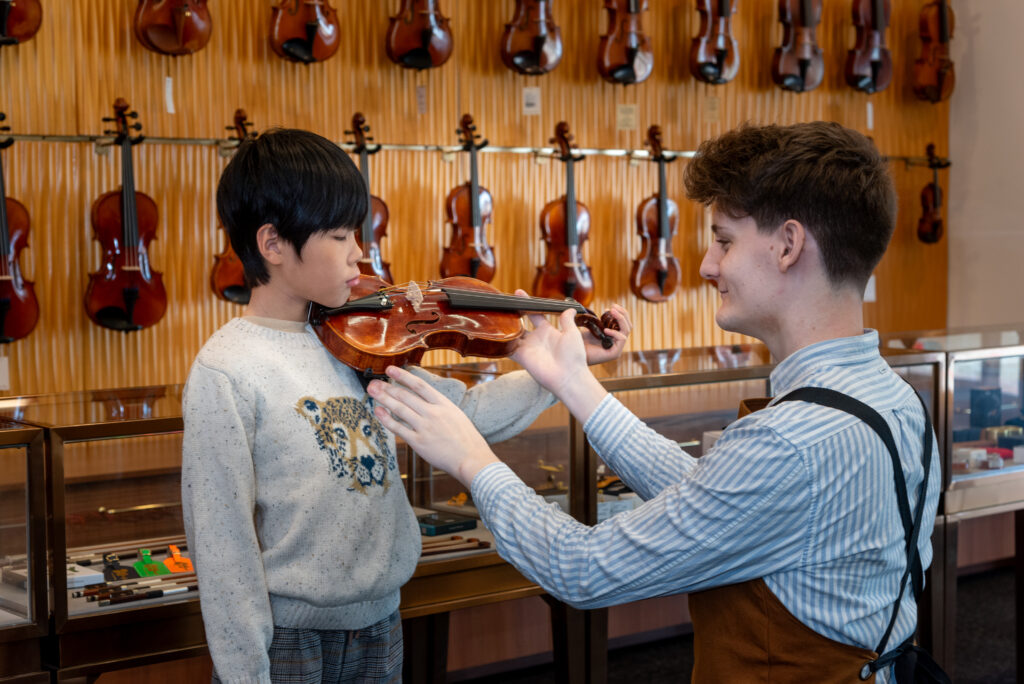
Buying Your First Instrument
It can be overwhelming when you or your child are about to start learning a brand new instrument! Of course, there is a lot to consider. Different instruments create different sounds, even between different violins, for example. We always suggest the student themselves try sizes in person. Ask your teacher or the staff instore to make sure you are using the correct size!
Instruments are commonly found in quarter size (¼), half size (½), three-quarter size (¾) & full size (4/4). There are also some less common sizes such as 1/8, 1/10 & 1/16 for younger students. Violas are measured in inches, commonly ranging from 12” to 16” – larger than a 4/4 violin which sits around 14”!
Here at Vivace Violins, we sell our entry level instruments with an Outfit. This means it will come with a student bow & case included in the cost. One less thing for you to think about! When you are certain you have the correct size instrument, the there are other accessories to think about. Such as:
- ROSIN – No rosin, no sound! Simply put, it is the rosin that allows your bow to grip the strings & create sound. A brand new bow with zero rosin will not make noise. Starting from $10, student level rosins last for years when treated with care.
- SHOULDER REST – It is necessary to have the correct size shoulder rest for your violin or viola. The varnish underneath your instrument is slippery on your shoulder / clothing! It is impractical to play without one, as it quickly forms bad posture habits. Cellos and Double Bass do not require a shoulder rest.
- CELLO ENDPIN STOPPER – While violins and violas use shoulder rests, cellos and double bass use endpin stoppers, or donut, to avoid the instrument from slipping! Your teacher or staff will let you know what style will suit you.
- SPARE SET OF STRINGS – When you purchase an instrument, our luthiers have already set up the instrument with strings that compliment the instrument. Different strings have different sounds, as do instruments & bows! They should last at least 8 months, depending on the practice & use of course. Check what is on the instrument, & ask about spares.
- CLEANING CLOTH – While you may not need one straight away, for the longevity of the instrument it is a great idea to keep your instrument in good shape. Wiping away excess rosin from the body of your instrument & strings will go a long way to maintaining a good sound.
- SHEET MUSIC – If you are learning with a school or private teacher, they will let you know what music books to get. There are some great starting books to choose from & if you aren’t sure, feel free to ask one of the staff!
Naturally, budget is an aspect to be considered. While some instruments are available at a lower price, the quality of these definitely needs to be considered. Many beginner students have discontinued their music journey due to low quality instruments. There is a good reason why our Amati First #1 is our most popular entry student instrument! At the price the quality of the instrument outshines others in many ways. Students will be more confident when their instrument works with them, not against them. If this is an issue, renting could be an option to ask our staff about!
We have seen musicians come through & start their journey at any age! Hopefully this gives you some more perspective of what comes with an entry level instrument. Don’t hesitate to ask questions to your teacher or our staff in store!
Happy Playing!
